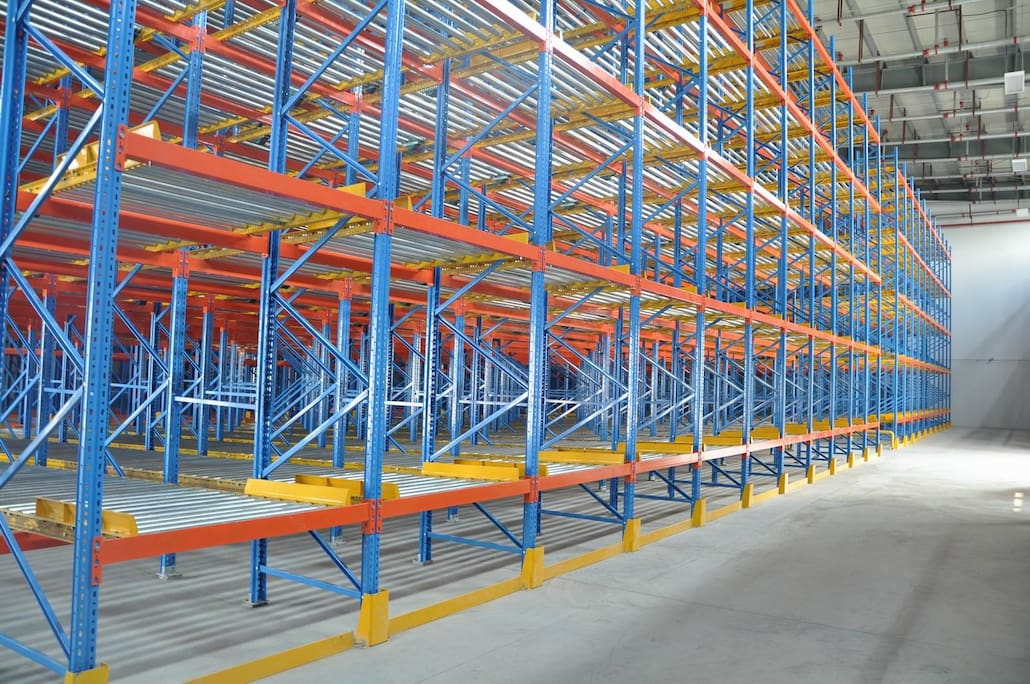Push back racking and pallet flow racking are both types of dynamic storage systems used in warehouses and distribution centers, but they differ in how they operate and their specific applications:
Push Back Racking:
Operation: Push back racking operates on a Last-In, First-Out (LIFO) basis. This means that the last pallet loaded onto the rack is the first one to be unloaded. When a new pallet is added to the system, it pushes the existing pallets back one position.

Design: Push back racking systems are designed with nested carts or trays that sit on inclined rails within the rack. The system uses gravity to move pallets along these rails, making it easier to load and unload multiple pallets deep.
Usage: This type of racking is ideal for storing multiple SKUs of the same product, where each lane can hold a different product. It also works well for high-density storage of bulk items.
Pallet Flow Racking:
Operation: Pallet flow racking operates on a First-In, First-Out (FIFO) basis. Pallets are loaded at the higher end of the rack and flow down the sloped roller or wheel conveyor to the picking face. When a pallet is removed, the next pallet moves forward to take its place.

Design: Pallet flow racks are designed with rollers or wheels that are set at a decline to allow for automatic movement of pallets. The flow of products is controlled by brakes and speed controllers installed within the system.
Usage: Pallet flow racking is suitable for high-density storage and rapid stock turnover of perishable goods or products with expiration dates. It is commonly used in industries such as food and beverage, pharmaceuticals, and manufacturing.
In summary, the main differences between push back racking and pallet flow racking lie in their operational principles (LIFO vs. FIFO), design features (nested carts vs. rollers/wheels), and ideal applications (high-density storage with LIFO retrieval vs. FIFO operations for rapid stock turnover). The choice between these systems depends on factors such as inventory rotation requirements, storage density needs, and the nature of the products being stored.
By Cathy

Add: RM. 1204, BLDG.-2, NEW SPACE DEVELOPMENT CENTER, NO.126 TIANYUAN RD., JIANGNING, NANJING, CHINA.